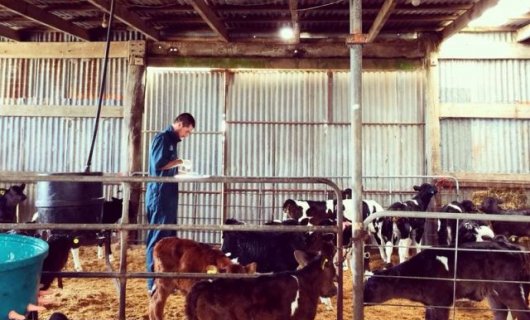Prevalence of Toxic Escherichia coli on New Zealand Dairy Farms

Shiga toxin-producing Escherichia coli (STEC) is a type of E. coli baceteria that produces a potent toxin which can cause bloody diarrhoea and kidney failure in people, particularly young children. Cattle are natural (asymptomatic) carriers of STEC and previous IDReC research found that people living around cattle and who had direct contact with cattle faeces were at higher risk for the disease.
Springer Browne, who recently completed his PhD, drove over 12,000km in 9 weeks to visit over 100 dairy farms during the 2014 calving season to provide the first national estimate of STEC prevalence. His work focused on young dairy calves, a cattle population previously identified to have a higher prevalence of STEC.
The recent IDReC publication in Applied and Environmental Microbiology used an advanced molecular laboratory method to identify STEC in 20% of calves on 75% of the farms studied, indicating widespread prevalence across New Zealand. The study provides information that will be useful for designing on-farm interventions to reduce human STEC exposure and inform future risk analysis decisions.
Springer noted "Driving from Northland to Southland and seeing the beautiful New Zealand countryside was a highlight, but by far the best experience was working with all the New Zealand dairy farmers, who graciously participated in the study.
Several other IDReC researchers were involved in this work including Anne Midwinter, Adrian Cookson, Patrick Biggs, Jonathan Marshall, Jackie Benschop, Neville Haack, Rukhshana Akhter and Nigel French. Access to the full article can be found at http://aem.asm.org/content/84/14/e00481-18